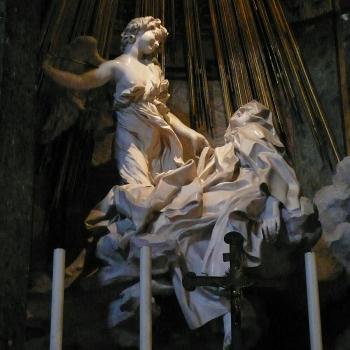I’m at America magazine:
Bruno Dumont’s 2017 film “Jeanette: The Childhood of Joan of Arc” may be the weirdest hagiography ever filmed. Dumont’s film, which features nonprofessional actors from his native northern France, shows us a little child who (like so many little children) grapples with the thorniest theological questions: Why hasn’t God stopped the violence and injustice all around me? How can we be happy? If some are damned, how can I trust God?
Her visions are shown on screen—in the world of the film they are as real as the sheep. Dumont has said that movies can “look beyond the visible to explore something that reason can’t.” Jeanette’s visions are a complete overturning of expectations, as bizarre as the living God. In the film’s most memorable sequence a nun, played by twins, sings rapid-fire theology over a heavy-metal guitar riff and then headbangs alongside the Maid of Orleans.
Now Dumont has released the second film in his diptych, “Joan of Arc.” Many of his previous techniques remain. Small countryside locales become the sites of epic struggle; detailed costuming combined with spare settings make the film feel at once theatrical and lived-in. Again we notice the shocking youth of Jeanne, the saint-to-be (Lise Leplat Prudhomme). Centered shots, exaggerated speaking styles, strange musical choices, human littleness in vast expanses—all of that is there. And yet, in “Joan,” these techniques are deployed to show not a vision-pierced world but a secular one. “Joan” is more psychological than hagiographic, and so I suspect it will be less revelatory than its predecessor, even for secular audiences.










